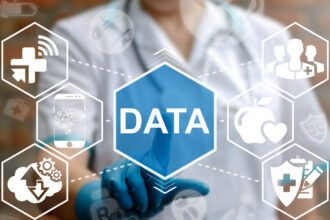Like many catch phrases, the concept of “Big Data” comes with multiple definitions. From the GIS viewpoint, big data describes datasets that are so large—both in volume and complexity—that they require advanced tools and skills for management, processing, and analysis. Such huge data sets can be a lot of work, but the extra effort pays off substantially. Geospatial big data provides detail and contextual information that provides immediate and long-term value across multiple disciplines and applications.
Like many catch phrases, the concept of “Big Data” comes with multiple definitions. From the GIS viewpoint, big data describes datasets that are so large—both in volume and complexity—that they require advanced tools and skills for management, processing, and analysis. Such huge data sets can be a lot of work, but the extra effort pays off substantially. Geospatial big data provides detail and contextual information that provides immediate and long-term value across multiple disciplines and applications.
Geospatial big data can include information from an assortment of sensors and data collection methods. Points and features with their associated attributes can be gathered using handheld or survey-grade GNSS, dedicated field computers or even smartphones. These data sets are small compared to other techniques, but they provide very high levels of precision and detail and can be updated rapidly. Mobile mapping systems combine lidar, imaging, GNSS and other sensors to capture large quantities of 3D information. The data is then fused to develop comprehensive models and databases. Data collected from airborne and satellite platforms range from imagery and lidar to multi-spectral remote sensing.
Capabilities for collecting geospatial big data continue to grow. According to a 2014 report by Euroconsult, 350 new Earth-observation satellites are expected in the decade ending in 2023. Closer to the ground, unmanned aircraft systems (UAS) provide flexible, cost-effective tools to collect imagery. And terrestrial 3D scanners and photography gather comprehensive information in areas where detail requirements or limited visibility come into play.
Attempting to utilize the enormous volume and diversity of geospatial big data is like drinking from a fire hose. To handle the flood of data, modern software integrates image processing, point cloud management, and photogrammetry into existing geospatial workflows. New, specialized solutions such as automated 3D modeling and feature recognition further increase the value of big data by extracting specialized information from large images and point clouds.
The Role of Big Data in GIS
Most people consider GIS as the basis for maps. But it’s much more than that. GIS can be the platform for correlation, visualization, and analysis of positions, attributes and information provided by big data. By associating the position of an asset with other attributes, it’s possible to better manage that asset. The key lies in gathering and managing the information.
Over large areas, GIS professionals can draw data from multiple sources. For example, consider the role of geospatial technologies in analyzing the health of forests in rural and urban environments. Raw data can come from satellite remote sensing imagery as well as airborne lidar and photography. Data from handheld GIS data collectors provides detail to serve as checkpoints and ground truth for the aerial data. When fused and analyzed, the integrated data provides information on the extents of the urban canopy, tree types, damage, health assessments and evaluations of heat and energy usage related to tree cover. In rural areas, foresters can use the information to assess tree sizes, health, and potential harvest values.
Big data also improves the temporal component of GIS. Initial data collection allows users to examine characteristics and conditions at a specific point in time. Subsequent collections provide information to analyze an asset’s behavior over time. Change detection software such as Trimble® eCognition® advanced analysis software can examine large data sets to automatically identify new or changed features. Rapid acquisition and automated processing of geospatial data is providing new efficiency in time-sensitive applications including engineering, land administration, transportation, agriculture, construction, telematics and more.
New Sources for Big Data
Many organizations that can benefit from aerial and satellite data do not have the capabilities to gather it themselves. As a result, they often turn to service providers for airborne photography and image processing. Imagery from satellite systems such as Landsat is available at no cost, but may lack the resolution required for many GIS applications.
A new option, Trimble Data Marketplace, enables users to view and select from an assortment of geospatial data available for a given location. The marketplace curates data from a variety of public and private sources, including government charts and terrain models, Landsat imagery, and high-resolution commercial satellite photos. Frequent updates to imagery enable users to conduct time-based analyses on natural or built features.
The expanding availability and use of big data brings new opportunities for geospatial professionals. As technologies evolve, GIS will add abilities to handle more data from an increasing variety of sources. For example, UAS are opening the possibilities for organizations to collect data from their own environments. They can inject the data into other big data sets for visualization and highly-customized analytics.
Clients in a growing array of disciplines are recognizing the value of geographic information and seeking to integrate it into their operations. The rising demand will drive increased efficiencies in gathering and sharing geospatial and related information.
Geospatial professionals have the skills and tools to select and integrate data best suited to generate needed information and results. By working closely with their clients and stakeholders, geospatial professionals can become trusted advisors and key parts of their clients’ information flows.







